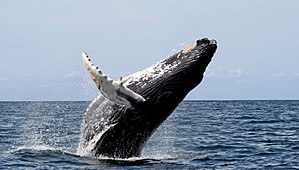The animals are employing new feeding behaviors and migration patterns
As climate change affects the ecology of the Pacific Ocean, many marine species will suffer, while two new reports indicate that certain fish and whales may successfully adapt.
In one study, scientists found that gray whales in the Pacific are capable of feeding at both seafloor and surface levels, which has allowed them to survive fluctuations in food supply during a series of glacial periods. Researchers identified the unique feeding pattern by studying food availability and the whales’ population over the past 120,000 years. The grays’ ability to survive major ecological shifts in the past suggests they will be able to cope with climate change in future.
“When you start looking at those kinds of scales, you are at the point where you can start looking at the magnitude of climate change projected to happen in the coming decades,” said Nicholas Pyenson, a paleontologist with the Smithsonian Institution.
“Studying the past is about different settings we see in terms of climate parameters and interactions with that environment,” he said. “In the geologic past, the entire habitat was eliminated multiple times, and we wanted to understand what that meant for how populations might have responded.”
In the paper, published in the Public Library of Science journal PLoS ONE, Pyenson and University of California, Berkeley, biologist David Lindberg found that the gray whales, typically known as bottom feeders, have actually retained their predecessor’s ability to feed on krill and herring nearer to the ocean surface.
“They’ve maintained their ancestral feeding mode and added it to their toolbox,” said Lindberg.
This was discovered by comparing past trends in whale feeding, with the characteristics of a pod of 200 gray whales off the coast of Vancouver Island. Rather than migrate from Mexico to Alaska like the rest of their species, these “resident” whales live in one spot. The special group makes up 1 percent of the total gray whale population of 20,000.
Lindberg says these whales may have stopped migrating because the threat posed by hunting has been removed. He also said that their feeding pattern is distinct because the area where they’ve settled has a limited supply of food available on the ocean floor, and an abundance near the surface.










